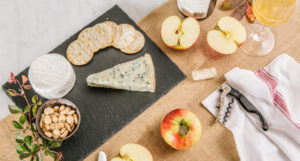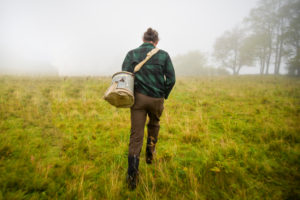Apples go way beyond the lunchbox. Get introduced to the wild history and varieties of apples.
Who doesn’t love a crisp fresh apple? The way the skin pops a little as you take a bite? Or the explosion of sweet, tart juice? But as delicious as they are, will a Honeycrisp or Fuji make a really exquisite cider?
The ancestors of our modern apples came from central Asia in the mountains of Kazakhstan where forests of wild apples still thrive. Travelers and traders trekking along the Silk Road gathered these fruits as they journeyed between eastern Asia and Europe, discarding seeds along the way. Those well-traveled seeds grew into trees that bore utterly new varieties. Apples have complex genetics. In a nutshell that means that each seed will grow into a tree that will bear unique fruit, that will probably not be much like its parents.
So in the beginning, diversity reigned. In the midst of this abundance, people noticed that some apples were great for eating fresh off the tree, some stored really well, and some made the best pies. And some apples made particularly wonderful cider. Apples, you see, are kind of like grapes. They’re not all created equal when you go from fresh to fermented juice. If you want something really delectable in the glass you need to work with apples that you might not want in your lunch box.
These are the kinds of apples prized by today’s makers of artisanal, heritage ciders. Some, such as Rhode Island Greening or Wickson Crabapple, are high in acid and super tart and are often called sharps. Others, like Yarlington Mill and Medaille d’Or, are chock full of tannins making them incredibly bitter or astringent, which has earned them the affectionate name “spitters”, for obvious reasons. They fall into the category of bittersweet or bittersharp apples. And still others, apples like Golden Russet and Newtown Pippin, have a rich complexity that comes through in a cider with flavors such as honeyed beeswax or bright lemongrass.
For each cider, the maker gives thought to the attributes of a particular apple and how it might contribute to a blend that expresses their vision. As it happens, most ciders are blends. Using several apple varieties in a blend lets a cidermaker make the most of each apple’s unique characteristics to create a cider with nuance and complexity. That being said, there are some apples which simply have it all and so make great single variety ciders, like a Kingston Black.
It has been estimated that some 16,000 named apple varieties have been grown in the United States since Europeans settled here. Many thousands were never were named at all. Modern American cidermakers are rediscovering these old gems, and their wild offspring, and bringing them back to America’s tables. Today’s heritage ciders celebrate these historic apples, connecting their rich past to a bright future.







